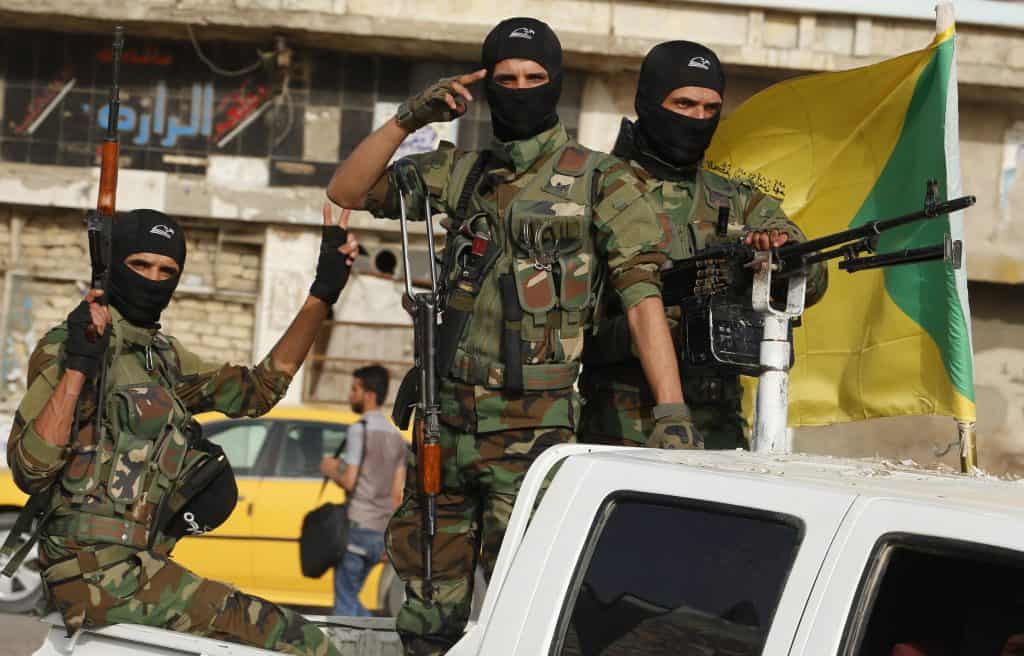
U.S. forces in the Middle East are on high alert after Hossein Amir-Abdollahian, Iran’s foreign minister, suggested on Monday that Tehran may attack U.S. forces in the region following an Israeli strike in Damascus last week. The strike killed seven Islamic Revolutionary Guard Corps (IRGC) officers, including the commander for Syria and Lebanon. In preparation for a potential resumption of Iranian attacks, Washington must ensure American servicemembers deployed to the Middle East have the military means to defend themselves and the political permission to counterpunch hard to make Iran and its proxies regret any new attacks.
An April 1 Israeli airstrike on a building adjacent to the Iranian embassy in Damascus killed the IRGC Quds Force commander responsible for smuggling weapons to Lebanon, where Iranian-backed Hezbollah has fired over 3,000 rockets into Israel in near-daily attacks since October. Despite clear statements from the United States that it was not involved in the Damascus strike, the Iranian foreign minister accused Washington of providing a “green light” for the attack and said it “must be held responsible.” In recent days, Iranian proxies in Iraq and Syria have repeated threats to attack U.S. forces.
It is hardly surprising that Iran is threatening U.S. forces again and using the Israeli military action as a thinly veiled excuse. The Islamic Republic of Iran and its terror proxies have targeted U.S. military personnel in the region for decades and have the blood of hundreds of Americans on its hands. Throughout the course of the Iraq War, for example, Iran-backed militias were responsible for the deaths of over 600 U.S. servicemembers.
Tehran seeks to evict U.S. military forces from the region to increase the regime’s ability to undermine and control Arab governments, maintain a land bridge to Hezbollah in Lebanon, and establish a firmer foothold in Syria for the purpose of ultimately exterminating the State of Israel.
Tehran normally uses militias and terror groups to conduct these attacks, providing them with funding, training, and weapons. This proxy terror strategy permits Tehran to advance its interests while concealing its role and displacing consequences and counterpunches onto others.
U.S. military forces are in Iraq, Syria, and Jordan to support partners and secure core American interests. Foremost among those interests, particularly in Iraq and Syria, is countering the ISIS terrorist organization and ensuring its caliphate remains defeated. A premature U.S. military departure from Iraq and Syria would empower Iran and increase the likelihood of an ISIS resurgence.
However, if Washington is going to keep U.S. troops in harm’s way, it must provide them with the military means and political permission to defend themselves and impose consequences that make adversaries think twice before they try to kill Americans.
As an urgent priority, considering the threats from Iran, the White House and Pentagon must learn from history and ensure that U.S. troops in the region have adequate force protection, including sufficient rocket, missile, and drone defenses.
We have seen the tragic consequences when U.S. troops are left with insufficient means to defend themselves.
Three U.S. soldiers were killed and over 40 wounded in a January 28 drone attack by Iranian proxies on a U.S. base in Jordan. Despite dozens of attacks in the preceding weeks, U.S. forces were left vulnerable at the base. Sadly, that event was not an anomaly. In January 2020, Iran launched ballistic missiles at two bases in Iraq housing U.S. troops. With no ballistic missile defenses in range, U.S. forces could only scramble for cover and wait for impact. More than 100 U.S. servicemembers were wounded.
In addition to providing our troops the means to defend themselves, Washington must also give commanders the permission to respond with overwhelming force when attacked.
Recent history provides an instructive lesson on what happens when such political permission is withheld and then belatedly granted. Between October 17, 2023, and February 4, 2024, Iranian proxies attacked U.S. forces 165 times. In stark contrast, the United States only responded with approximately nine limited airstrikes before the fatal Tower 22 attack in Jordan. That American “restraint” served as a green light for additional attacks on U.S. forces.
Following the deaths of three Americans in Jordan, the United States finally responded forcefully by striking 85 targets across Iraq and Syria. Less than a week later, Washington killed a Kata’ib Hezbollah commander responsible for attacks on U.S. forces in a drone strike in Baghdad.
Tehran and its proxies got the message and have not attacked U.S. forces since February 4.
This should not be surprising to anyone familiar with the Islamic Republic of Iran. When confronted with the resolute application of American military strength, Tehran tends to back down.
In the face of another looming Iranian attack that could come at any moment, Washington must act quickly to ensure U.S. servicemembers in harm’s way have the means to defend themselves and the political permission to respond with overwhelming force when the next Iranian attack comes.
A failure to take these steps invites more American casualties and more Iranian aggression.







